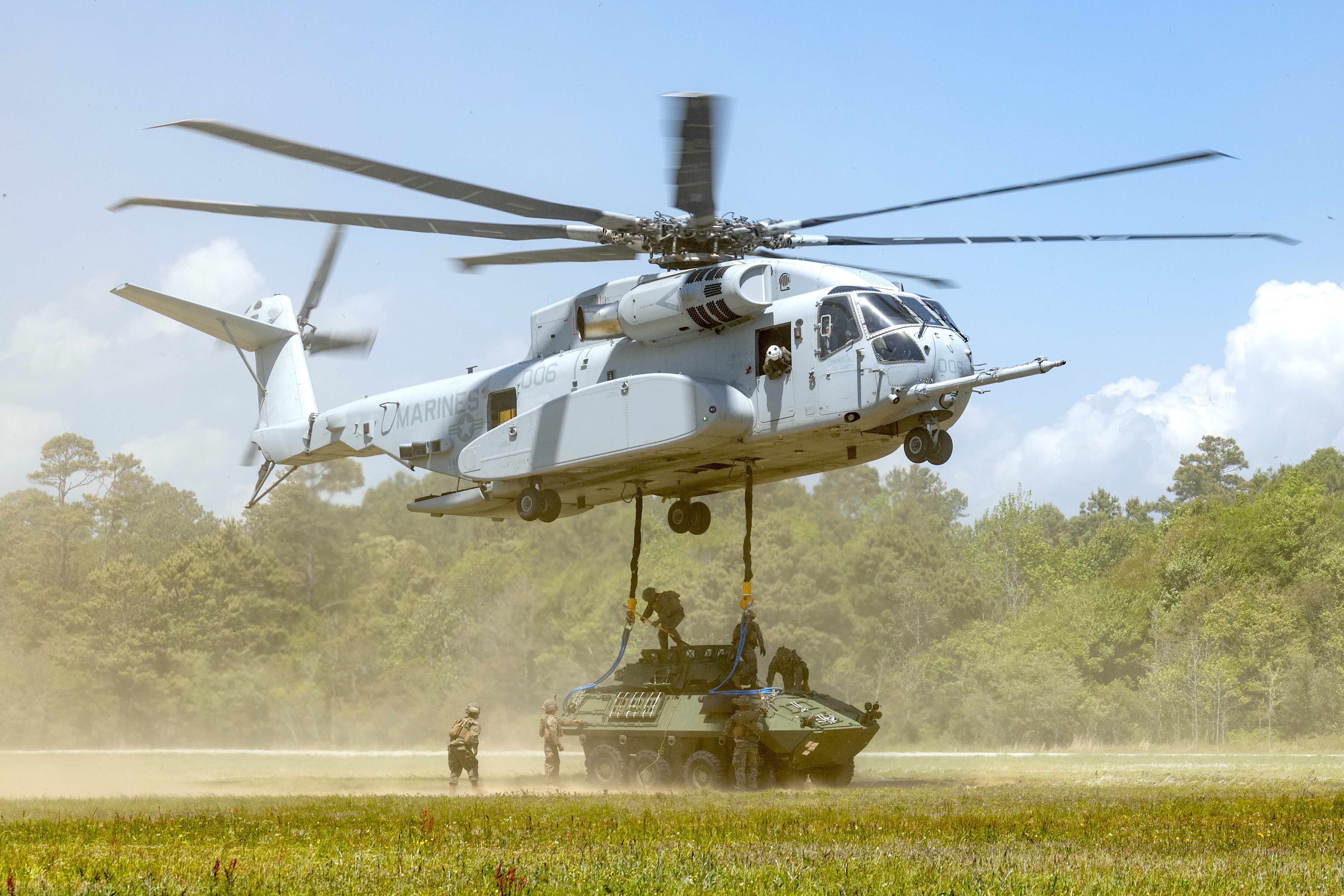
This post is part of a series looking back at the top naval stories from 2022.
The Marine Corps is still pursuing Gen. David Berger’s overhaul to modernize the force, which includes preparing Marines to operate in the Indo-Pacific region against a competitor like China while maintaining the Corps’ focus on missions like crisis response.
To that end, the service continued buying ground assets that are crucial to the Marines’ mission and weapons like the Naval Strike Missile that the service argues are key to the Expeditionary Advanced Base Operations (EABO) concept that would see Marines shuttling around islands and shorelines, firing anti-ship missiles.
The Marine Corps is also working in conjunction with the Navy on its Future Vertical Lift capability, which the services see as a family of systems that could include both manned and unmanned platforms.
Amphibious Combat Vehicle
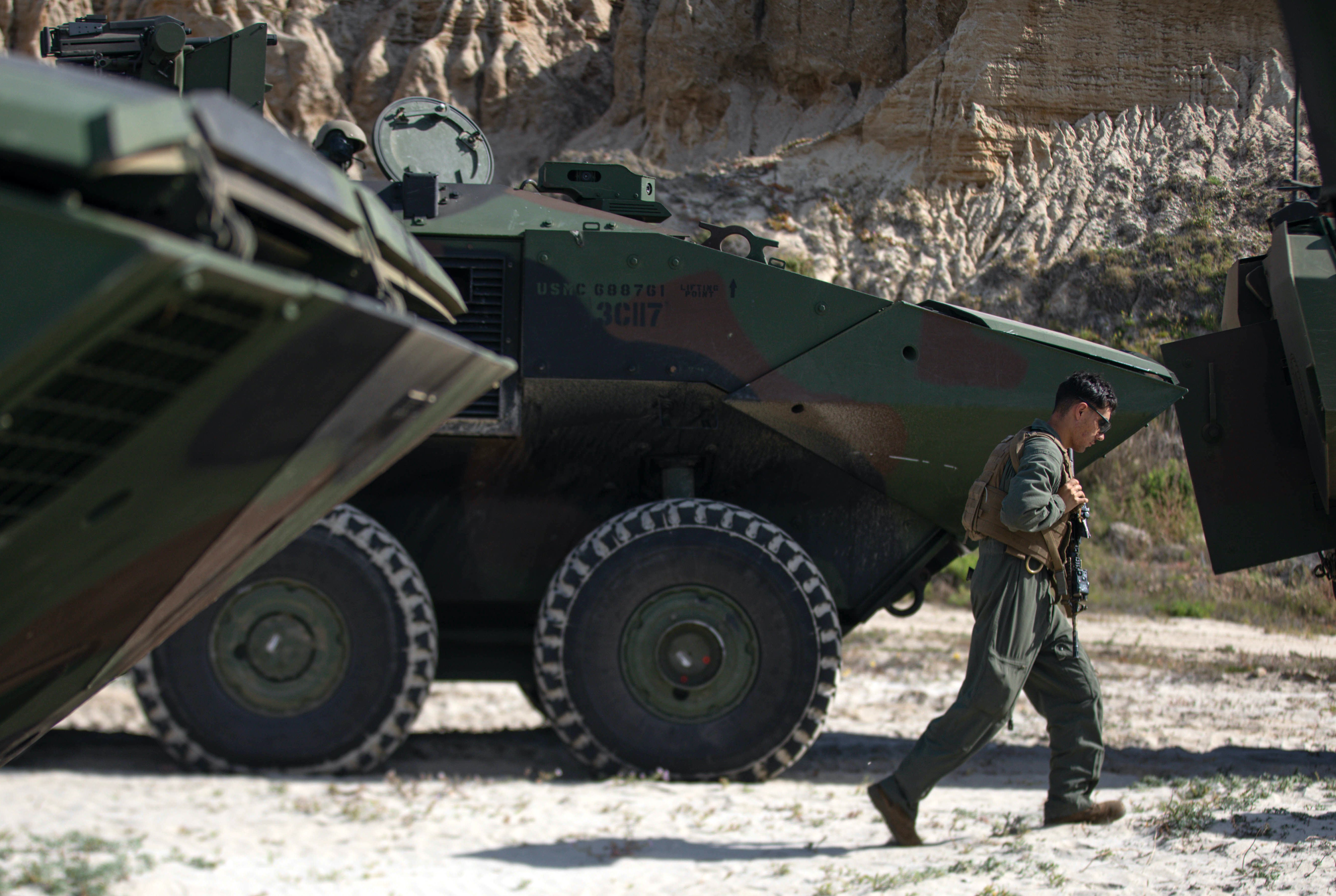
The Marine Corps in its Fiscal Year 2023 budget submission sought to buy 74 Amphibious Combat Vehicles, which will replace the Assault Amphibious Vehicles.
Lawmakers in the final defense spending and authorization bills met this request. But the ACV had a difficult year.
Following a July training incident in California, in which two ACVs were knocked off their wheels in heavy surf, the Marine Corps paused waterborne operations. Shortly after, the service delayed its first ACV deployment, which was scheduled for this fall with the 13th Marine Expeditionary Unit that deployed with the Makin Island Amphibious Ready Group.
“Meanwhile, we will continue to pursue more testing, more data in higher surf zones with, I believe it’s medium surf index, so that we can have a [clearer] understanding of what sea states of six and up to eight would mean,” Marine Corps deputy commandant for combat development and integration Lt. Gen. Karsten Heckl told USNI News in September.
Several weeks after the Marine Corps gave the ACVs the green light to return to the water in September, another ACV turned over during training at Camp Pendleton, Calif., in October.
While no Marines were injured in the two incidents, the pause led to the decision to delay the first ACV deployment so the Marine Corps can work on certifications and refine the logistics and maintenance work for the new vehicles.
In August, BAE Systems won an $88 million contract to build the 30-mm cannon ACV variant for the Marine Corps. The service is slated to buy a personnel carrier, a recovery variant, a vehicle with a 30-mm cannon, and a command and control variant.
Last month, the Marine Corps issued BAE Systems a $135.7 million modification so the company can build 30 full-rate production vehicles. The contract is worth up to $2 billion, according to the Defense Department contract announcements.
Naval Strike Missile
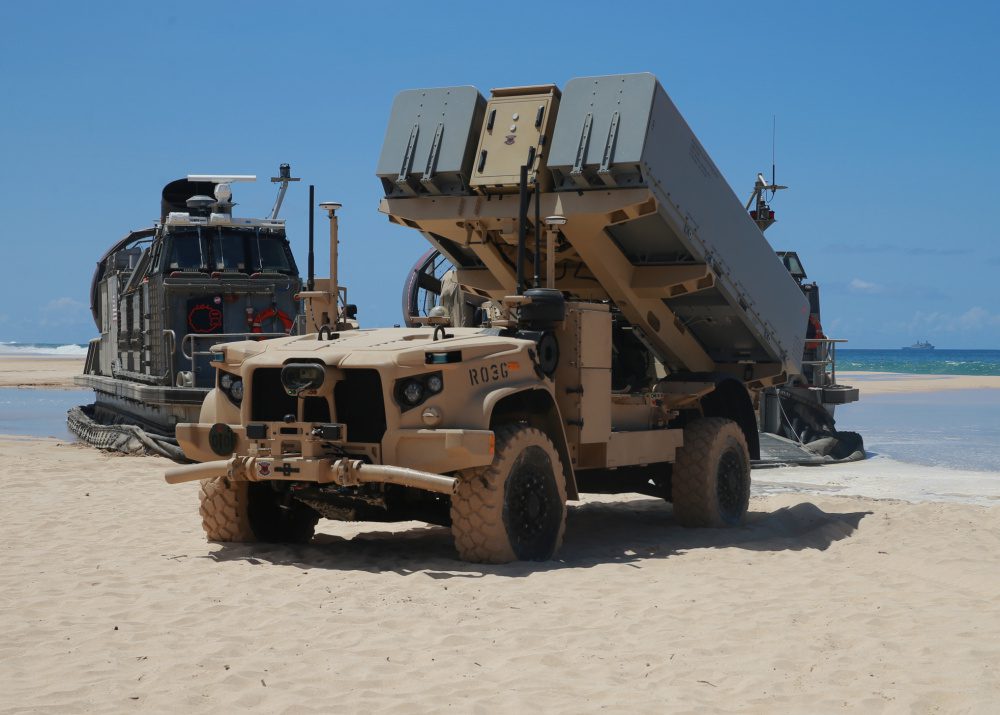
Over the last several years, Marine Corps officials have argued they need ground-based anti-ship missiles to conduct operations in regions like the Indo-Pacific. The idea is that small, mobile units of Marines would move around islands and shorelines and target adversaries with those weapons.
The Marine Corps has tested this capability with a Naval Strike Missile mounted on a modified Joint Light Tactical Vehicle in a program known as Navy-Marine Corps Expeditionary Ship Interdiction System (NMESIS).
“The Ground Based Anti-Ship Missile (GBASM) provides USMC Artillery Battalions an anti-ship missile capability in support of Expeditionary Advanced Base Operations,” according to the Navy’s FY 2023 budget highlights book.
In the FY 2023 budget submission, the Marine Corps asked lawmakers to buy 115 Naval Strike Missiles, a request that Congressional authorizers and appropriators met. Both the Navy and Marine Corps plan to buy the same NSM design, according to Marine Corps budget justification documents.
CH-53K King Stallion
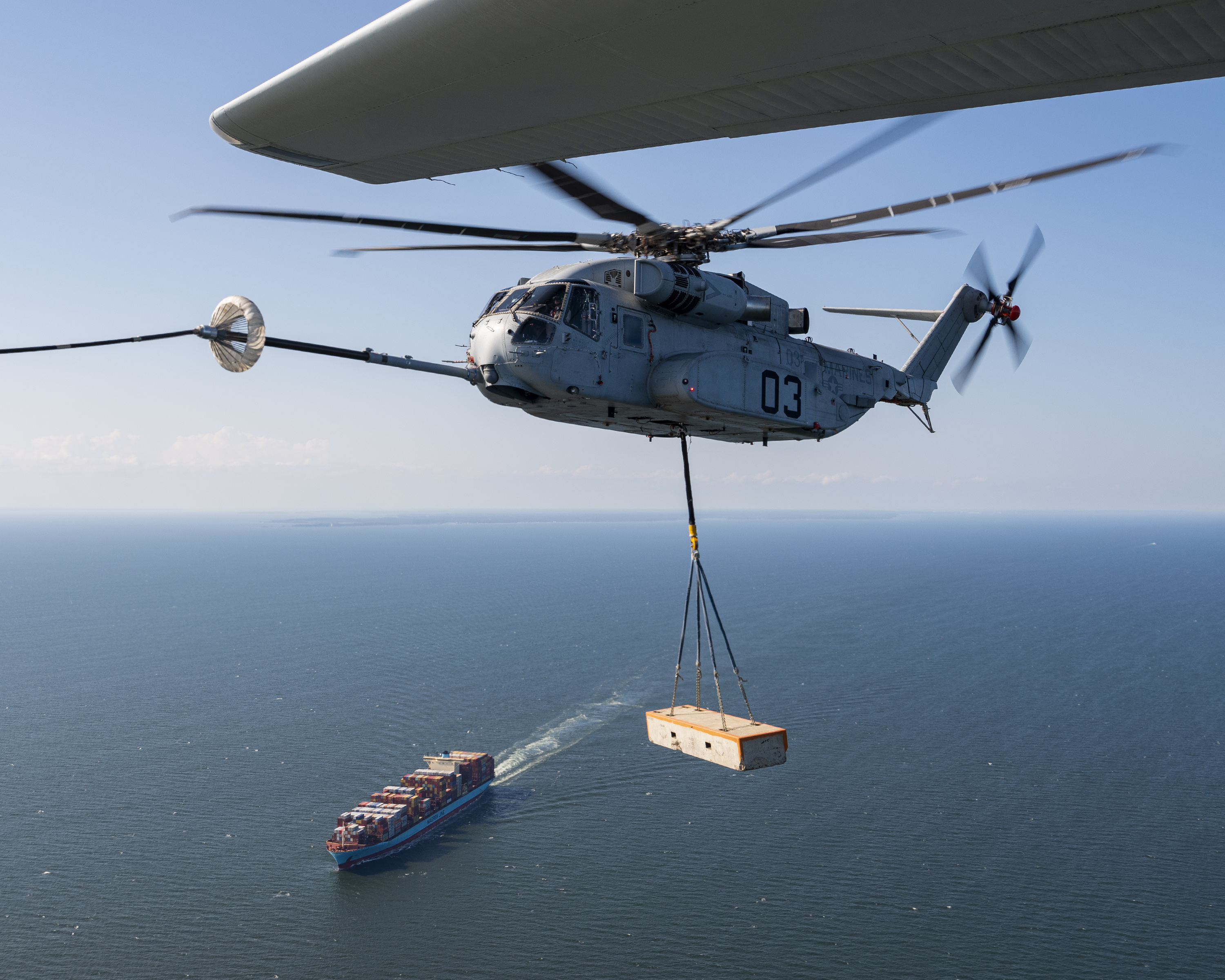
Earlier this year, the Marine Corps announced that its new heavy-lift helicopter reached initial operational capability.
“In addition to meeting IOC criteria, the CH-53K successfully completed a thorough initial operational test and evaluation period that resulted in over 3,000 mishap-free hours flown in various challenging environments and terrain,” the Marine Corps said in an April news release.
The CH-53K King Stallion will ultimately replace the Marine Corps CH-53E Super Stallion.
The Navy, which purchases the CH-53Ks through its aircraft procurement account, asked for 10 new helicopters in the FY 2023 request. Those helicopters are full-rate production aircraft, according to the FY 2023 budget justification documents. With several testing phases completed, the service’s five-year budget outlook showed the Navy ramping up the program’s acquisition in the coming years. The projections show the Navy buying 15 helicopters in FY 2024 and then 21 helicopters each year from FY 2025 through FY 2027.
The Navy plans to deploy the CH-53Ks for the first time in FY 2024, the budget documents said.
Future Vertical Lift

After several years of assessments to keep in line with the Commandant’s Planning Guidance, the Marine Corps this year said it would pursue a family of systems approach to replace its rotary-wing fleet in what the service is calling Future Vertical Lift.
“So vertical take-off and landing, or VTOL family of systems – because what it does is it creates more of an umbrella program that things like a future [UH-1Y Venom] replacement, although again getting those capabilities once those platforms are end of life – but it also encompasses things like large unmanned logistics system airborne,” Assistant deputy commandant for aviation Brig. Gen. Matt Mowery said at a February conference.
“As we look at the distances that we’ve got to cover out in the Pacific, you know to have something unmanned that can do very repetitive work, risk-worthy, but over long distances and at an airspeed that’ll make a difference on the battlefield, that may be actually a priority for us over an H-1 replacement.”
The family of systems approach to Future Vertical Lift is one the Navy also plans to take, though officials have acknowledged the Navy and Marine Corps will likely have different requirements. For example, Navy helicopters will have to operate off the back of destroyers.
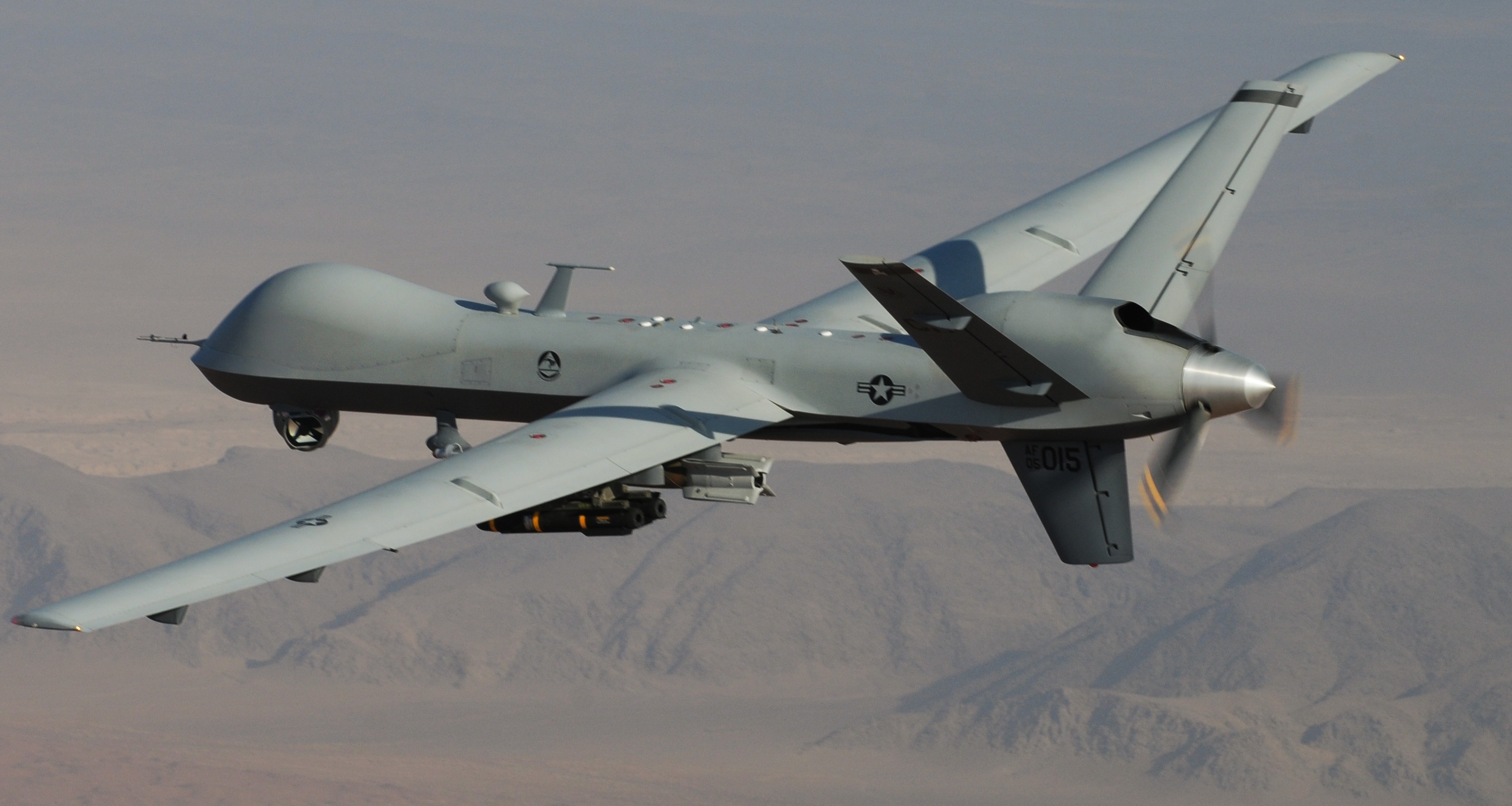
Meanwhile, the Marine Corps is also planning for a family of systems approach to MUX/MALE, or the medium-altitude long-endurance system. The service has broken MUX down into several tiers since the Marine Corps in 2020 abandoned plans to build a large Group 5 ship-based UAV. The first tier includes the MQ-9A Reaper for intelligence, surveillance and reconnaissance missions.
The Marine Corps has been experimenting with the Reapers to help inform what it needs for MUX.
In August, the Navy issued General Atomics a $135.8 million contract to build eight Reapers with extended range for the Marine Corps.
“As part of the Marine Corps Force Design 2030 efforts, the Marines plan to transition Unmanned Aerial Vehicle Squadron (VMU) 3 located at Kaneohe Bay, Hawaii to MQ-9A operations. VMU-3 will utilize the MQ-9A [extended range] to support training for the Marine Littoral Regiment,” Naval Air Systems Command said in an August news release.





